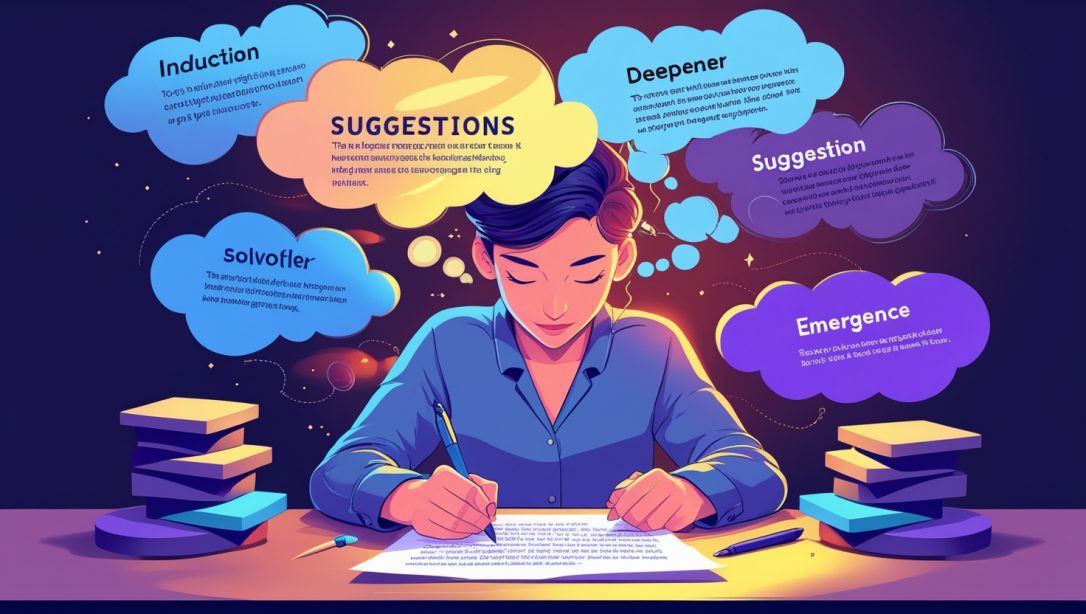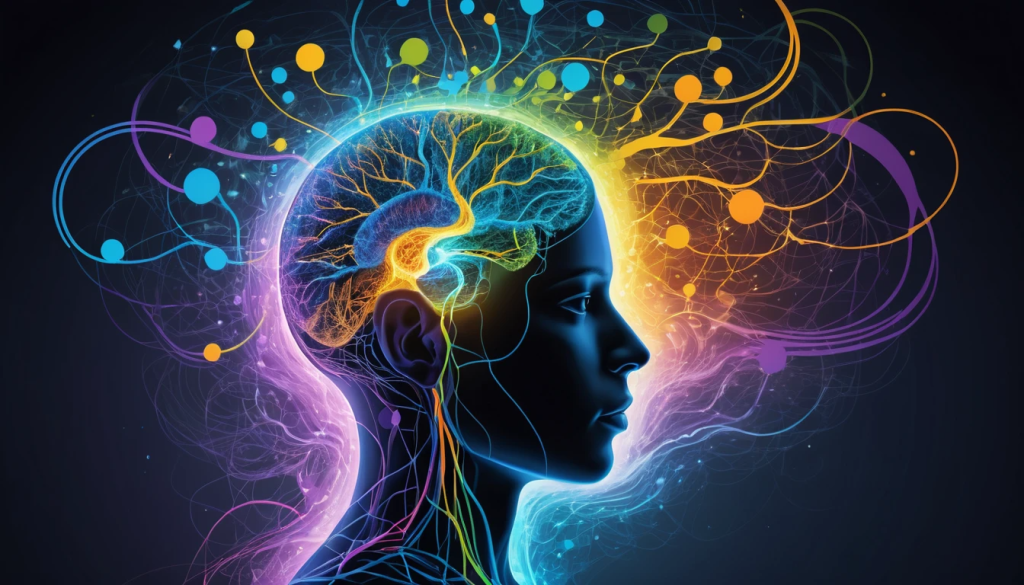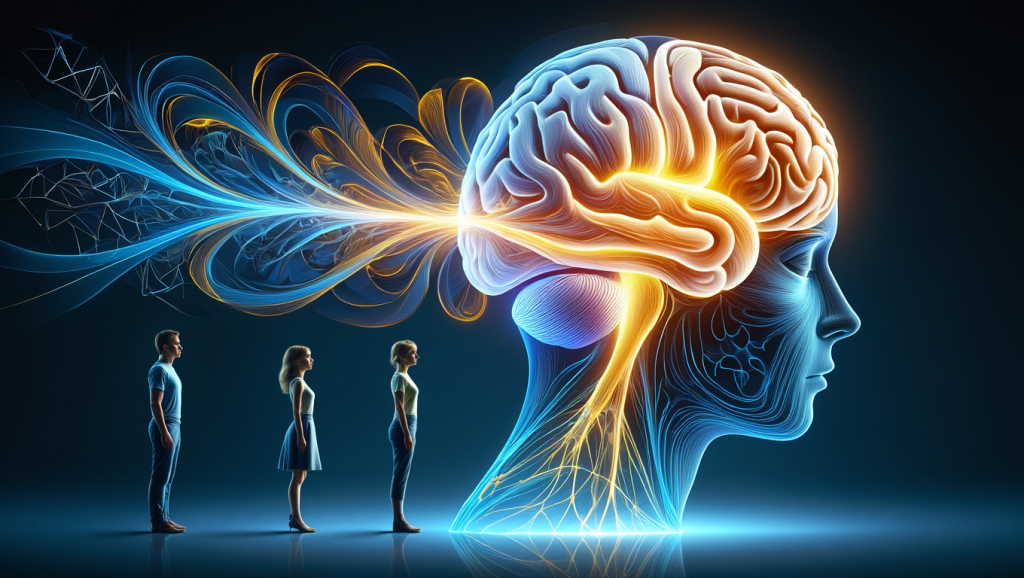Creating Your First Self-Hypnosis Script: A Step-by-Step Guide
The words you use during self-hypnosis aren’t just important—they’re transformative. A well-crafted self-hypnosis script can make the difference between modest temporary improvements and profound, lasting change. Just as a master chef follows recipes that transform simple ingredients into culinary masterpieces, you can learn to combine words and images that transform your mental landscape.
This guide will walk you through the neuroscience-backed process of creating personalized self-hypnosis scripts that speak directly to your subconscious mind. Whether you’re a beginner or have some experience with self-hypnosis, these principles will help you craft scripts with greater impact and effectiveness.
The Science Behind Effective Scripts
Research in neurolinguistic programming and cognitive psychology reveals why certain language patterns affect your brain differently:
- Your subconscious responds most strongly to present tense statements. Brain imaging studies show increased activation in implementation regions when suggestions are phrased as happening now rather than in the future.
- Negative constructions require double processing. When you hear “don’t think about a blue elephant,” your brain must first imagine a blue elephant before negating it. This creates unnecessary cognitive load.
- Concrete, sensory-rich language activates more brain regions than abstract concepts, creating stronger neural associations and memory formation.
- Emotion-linked language creates stronger encoding. Suggestions paired with positive emotional states show significantly higher retention and implementation rates.
Understanding these principles allows you to craft scripts that work with your brain’s natural functioning rather than against it.
The Four Essential Components of Any Self-Hypnosis Script
Every effective self-hypnosis script contains these core elements:
1. The Induction
This section helps transition your brain from normal waking consciousness (beta waves) to a more receptive state (alpha and theta waves). An effective induction typically lasts 3-5 minutes and focuses on relaxation, focus narrowing, or confusion techniques.
2. The Deepener
This component intensifies the hypnotic state, taking you from light to medium or deep trance. Deepeners often use counting, visualization of descending, or progressive relaxation techniques.
3. The Suggestion Phase
This is the transformative heart of your script, where you deliver carefully crafted suggestions to your subconscious mind. These should be aligned with your specific goals, whether that’s changing a habit, enhancing a capability, or shifting a perception.
4. The Emergence
This section brings you back to full waking consciousness while preserving the positive effects of the session. It typically includes counting up, affirmations of the changes taking hold, and suggestions for feeling refreshed and alert.
Let’s explore how to craft each of these components effectively.
Step 1: Crafting Your Induction
Your induction sets the foundation for everything that follows. Here’s how to create one that works for your mind type:
For Analytical Types:
Analytical minds often resist traditional relaxation inductions but respond well to:
The Confusion Induction Template:
Close your eyes and focus on your breathing. As you breathe in and out, I'd like you to identify seven different sounds in your environment. [Pause] Now, while keeping track of those sounds, count backward from 100 by 7s. [Pause] As you continue counting, notice three distinct physical sensations in your body right now. [Pause] With your attention divided between the counting, the sounds, and the sensations, you may notice your conscious mind becoming overloaded, allowing a comfortable sense of letting go to develop naturally...
The Mind-Busy Induction Template:
With your eyes closed, imagine a blackboard in front of you. Begin writing the alphabet on this board, but after each letter, draw a geometric shape—a circle after A, a square after B, a triangle after C, and so on, creating new shapes as you continue. As you engage in this mental task, you may notice other parts of your mind beginning to quiet and relax, allowing you to drift comfortably into a receptive state...
For Non-Analytical Types:
Non-analytical minds typically respond better to:
The Progressive Relaxation Induction Template:
Close your eyes and take three deep breaths. With each exhale, feel tension melting away. Now focus on your feet and toes. Notice any tension there and let it dissolve completely. [Continue moving up through body parts] As each part relaxes, you can drift deeper into this comfortable state, allowing your mind to become quiet and receptive...
The Sensory Awareness Induction Template:
Bring your attention to the points where your body contacts the chair. Feel the support beneath you. Notice the temperature of the air on your skin. Become aware of the sounds around you—both close and distant. As you notice these sensations without judgment, allow yourself to drift into a pleasant state of relaxed awareness...
Step 2: Designing Your Deepener
Once you’ve induced a receptive state, deepen it with one of these approaches:
The Countdown Deepener Template:
I'm going to count from 10 down to 1. With each number, you'll go twice as deep as before. 10... drifting down... 9... deeper still... 8... letting go more completely... [continue to 1]... and at 1, you've reached the perfect level of relaxation for positive change.
The Staircase Deepener Template:
Imagine yourself at the top of a beautiful staircase with 10 steps. As you take the first step down, feel yourself relaxing more deeply. With each step, your mind becomes more receptive and calm. [Guide down each step] As you reach the bottom, you find yourself in your special place of perfect relaxation and receptivity.
The Elevator Deepener Template:
Visualize yourself standing in an elevator on the 10th floor. As the elevator begins to descend, you can feel yourself going deeper into relaxation. Floor 9... more relaxed... Floor 8... deeper still... [continue to floor 1]... As the doors open on floor 1, you step out into a state of perfect receptivity.
Step 3: Creating Powerful Suggestions
This is the most crucial part of your script—where actual change begins. Follow these neuroscience-backed principles for maximum effectiveness:
The Six Criteria for Effective Suggestions
- Keep it simple: Your subconscious processes information like a young child—directly and literally.
- Use present tense: Phrase suggestions as if they’re already happening (“I am” not “I will”).
- Stay positive: State what you want, not what you don’t want (“I breathe easily” rather than “I don’t wheeze”).
- Be specific and measurable: “I comfortably eat one serving and feel satisfied” works better than “I eat less.”
- Include feelings: “I feel confident and calm when public speaking” adds emotional resonance.
- Add sensory details: “I feel the cool water quenching my thirst” engages multiple brain pathways.
Suggestion Templates for Common Goals
For Habit Change:
I now [desired behavior] easily and naturally. Each time I [situation/trigger], I automatically [new response] and feel [positive emotion]. This new pattern strengthens every day, becoming my natural way of being. I see myself as someone who [identity statement related to new habit].
For Confidence Building:
I am confident and composed in all situations. I stand tall, speak clearly, and make eye contact with ease. With each breath, confidence flows through my entire body. I trust my abilities and value my unique perspective. Others respond positively to my natural confidence.
For Stress Reduction:
I remain calm and centered regardless of external circumstances. My breath is deep and steady. My mind is clear and focused. I release tension with each exhale. I respond thoughtfully rather than react emotionally. Peace is my natural state, and I return to it easily.
For Performance Enhancement:
I perform at my peak with focused ease. My mind and body work in perfect harmony. I enter a state of flow naturally when [specific activity]. Time seems to slow down, allowing me to respond perfectly. I enjoy the process fully, which enhances my results.
The 3R Formula for Maximum Impact
Research shows that structuring your suggestions in this sequence enhances effectiveness:
- Release: “I now release all old patterns of [unwanted behavior/thought/feeling]”
- Replace: “In their place, I embrace [new desired pattern]”
- Reinforce: “This new pattern strengthens each day, becoming my natural way of being”
Step 4: Crafting Your Emergence
The way you end your self-hypnosis session significantly impacts how well the suggestions integrate. An effective emergence:
The Basic Emergence Template:
In a moment, I'll count from 1 to 5. With each number, I'll become more alert and aware while maintaining the positive changes established during this session. 1... energy beginning to return... 2... becoming more aware of my surroundings... 3... feeling refreshed and positive... 4... almost fully alert now... 5... eyes open, fully awake, feeling wonderful and refreshed, carrying these positive changes with me throughout my day.
Putting It All Together: Complete Script Templates
Here are two complete script templates you can customize for your purposes:
Template for Analytical Types:
I close my eyes and focus on my breathing. While maintaining awareness of my breath, I begin counting backward from 100 by 3s. [100, 97, 94...]. As I count, I simultaneously notice the points where my body touches the chair.
With each number, I allow my analytical mind to become productively occupied, creating space for my subconscious to become receptive. I continue counting until counting requires too much effort, at which point I can simply let go.
I now imagine an elevator at the 10th floor. As it descends, I go deeper into this receptive state. 10... 9... 8... with each floor, twice as deep. By floor 1, I've reached the perfect level for positive change.
In this receptive state, I now [1-3 specific suggestions using the principles above].
I see myself tomorrow, naturally implementing these changes. I observe how differently I respond in situations that previously challenged me. This new way of being feels comfortable and natural.
To return to full awareness, I count from 1 to 5. 1... energy returning. 2... becoming more aware. 3... feeling positive and refreshed. 4... almost fully alert. 5... eyes open, fully awake, feeling wonderful and carrying these positive changes with me.
Template for Non-Analytical Types:
I close my eyes and take three deep breaths. With each exhale, I release tension and sink deeper into relaxation. I focus on my feet and toes, releasing any tension there. I work upward through my calves, thighs, abdomen, chest, hands, arms, shoulders, neck, and face—each part relaxing completely.
As I relax physically, my mind becomes quiet and still like a peaceful lake. I imagine descending a beautiful staircase with 10 steps. Each step takes me deeper into relaxation. By the bottom step, I've reached the perfect state for positive change.
In this receptive state, I now [1-3 specific suggestions using the principles above].
I feel these new patterns integrating into every cell of my being. I see myself tomorrow, naturally living these new patterns. This new way of being feels completely natural and comfortable.
To return to full awareness, I count from 1 to 5. 1... energy returning. 2... becoming more aware. 3... feeling positive and refreshed. 4... almost fully alert. 5... eyes open, fully awake, feeling wonderful and carrying these positive changes with me.
Customizing for Different Brain Wave States
Different goals may benefit from different depths of trance, associated with specific brain wave patterns:
Light Trance (Alpha Waves) – Best for:
- Learning new information
- Motivation enhancement
- Creativity boosting
- Simple habit modification
Medium Trance (Alpha-Theta Border) – Best for:
- Stress reduction
- Confidence building
- Pain management
- Emotional processing
Deep Trance (Theta Waves) – Best for:
- Addressing deeply ingrained habits
- Accessing subconscious memories
- Profound belief changes
- Visualization work
Adjust your deepener (making it longer or shorter) to achieve the appropriate level for your specific goal.
Recording Your Script
Once you’ve written your customized script, consider these tips for recording it:
- Speak slowly with a calm, confident voice
- Add strategic pauses to allow processing time
- Maintain consistent volume throughout
- Use a clean recording environment with minimal background noise
- Optional: Add background sounds like gentle nature sounds or specific binaural beats designed for the brain state you’re targeting
Script Refinement Process
Your first script will likely benefit from refinement. After using it for 3-5 sessions, ask yourself:
- Which parts felt most effective or resonant?
- Did any wording feel awkward or jar you out of the trance state?
- Did you experience resistance to any suggestions?
- What changes or progress have you noticed in daily life?
Use these insights to refine your script, strengthening what works and adjusting what doesn’t.
Beyond Basic Scripts: Advanced Techniques
As you become comfortable with basic script creation, consider incorporating these advanced techniques:
Embedded Commands
By slightly changing your tone or adding brief pauses around key phrases, you create “embedded commands” that bypass critical filters:
Basic: “You might notice yourself drinking more water throughout the day.” Advanced: “You might notice yourself… DRINK MORE WATER… throughout the day.”
Metaphors and Stories
The subconscious mind responds powerfully to metaphorical language. Create a metaphor that parallels your desired change:
For confidence: “Imagine a mighty oak tree, with roots extending deep into the earth, providing perfect stability even in the strongest winds…”
Future Pacing
Vividly imagine yourself in future situations successfully implementing your changes:
“I now see myself at next week’s meeting, speaking clearly and confidently, noticing the positive responses from colleagues…”
Conclusion: The Living Document
Your self-hypnosis script should be a living document that evolves with you. As you achieve initial goals, update your script to address new aspirations or deepen existing changes.
Brain research confirms that repetition strengthens neural pathways—consistency is key. Aim for daily practice with your personalized script for at least 21 days, the commonly accepted minimum time for new neural networks to establish.
In our next post, we’ll explore how to use self-hypnosis specifically for stress reduction and achieving deep states of relaxation.
Have you created your own self-hypnosis scripts before? What goals would you like to address with a personalized script? Share your thoughts in the comments below!
Disclaimer: Self-hypnosis scripts are tools for personal development and not meant to diagnose or treat medical or psychiatric conditions. If you’re experiencing serious health issues, please consult appropriate healthcare providers.







